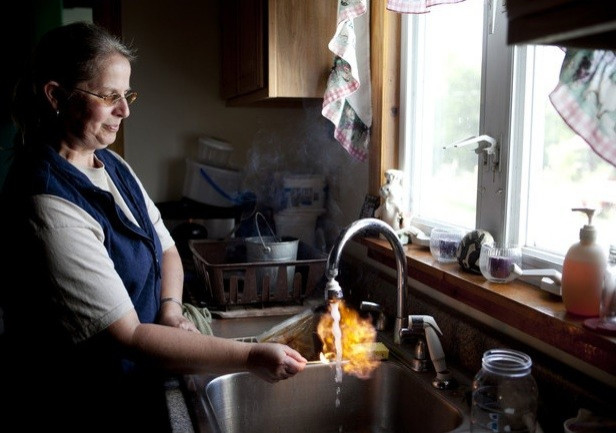EPA to Develop National Regulations on Disposal of Fracking Wastewater

The U.S. Environmental Protection Agency (EPA) plans to increase oversight of the natural gas extraction industry, announcing it will develop national standards for the disposal of polluted wastewater generated by hydraulic fracking from coal bed and shale formations.
In a press release, the EPA said it will begin developing a proposed standard in the coming months and plans to consult industry and public health groups throughout the process.
The president has made clear that natural gas has a central role to play in our energy economy. That is why we are taking steps -- in coordination with our federal partners and informed by the input of industry experts, states and public health organizations -- to make sure the needs of our energy future are met safely and responsibly, said EPA Administrator Lisa P. Jackson.
Energy companies have increased the use of hydraulic fracturing, known as fracking, in recent years, a process that some environmental groups claim can potentially contaminate groundwater with toxic chemicals. Fracking involves injecting millions gallons of water, sand and chemical additives underground to unlock natural gas from deep shale rock formations.
Almost 15 percent of U.S. natural gas production comes from shale formations, according to the EPA, which said that figure is expected to triple in the coming decades. While there are national standards that prevent drilling companies from disposing of wastewater associated with shale gas extraction into waterways, the agency said it will draft standards drillers must meet in order to have its wastewater sent to treatment plants, which would work to remove harmful contaminants. Currently, many companies either recycle much of the wastewater produced by fracking or inject it deep underground.
Those standards would also apply to wastewater produced by coal bed methane drilling, a process that is currently not subject to national regulations. The process, which involves drilling into a coal deposit and then decreasing water pressure from it in order to extract methane, is used in states such as Wyoming, Montana and Colorado, according to the Energy Justice Network.
The EPA said a proposed rule for shale gas will be released by 2014 while one for coal bed methane will be available by 2013.
Industry groups and Republican lawmakers have spoken out against the development of national guidelines, arguing the natural gas industry should be regulated in a state-by-state basis.
The EPA's announcement is a solution in search of a problem, Rep. Tim Murphy, R-Pa., co-chairman of the House Natural Gas Caucus, told The Associated Press.
The EPA is currently conducting a national study to determine whether fracking has polluted groundwater and drinking water, as well if it could have future health and environmental impacts.
Hydraulic fracturing has been linked to rises in air and water pollution across the nation. In 2009, Pavillion, Wyoming became the site of the first federal investigation on the connection between fracking and water pollution after the EPA discovered 11 out of 39 drinking wells in the town were polluted with toxic chemicals used in oil and gas production.
In May, a Duke University study found that levels of flammable methane in drinking water wells increased to dangerous levels when those water supplies were close to natural gas wells. After testing 68 drinking water wells in northeastern Pennsylvania and southern New York, the researchers concluded there was a clear correlation between drilling activity and the seepage of gas contaminants underground, reporting that some residents in the town of Dimock, Penn. saw their wells explode or could light their tap water on fire due to the high levels of methane that had infiltrated their water supply.
© Copyright IBTimes 2024. All rights reserved.





















